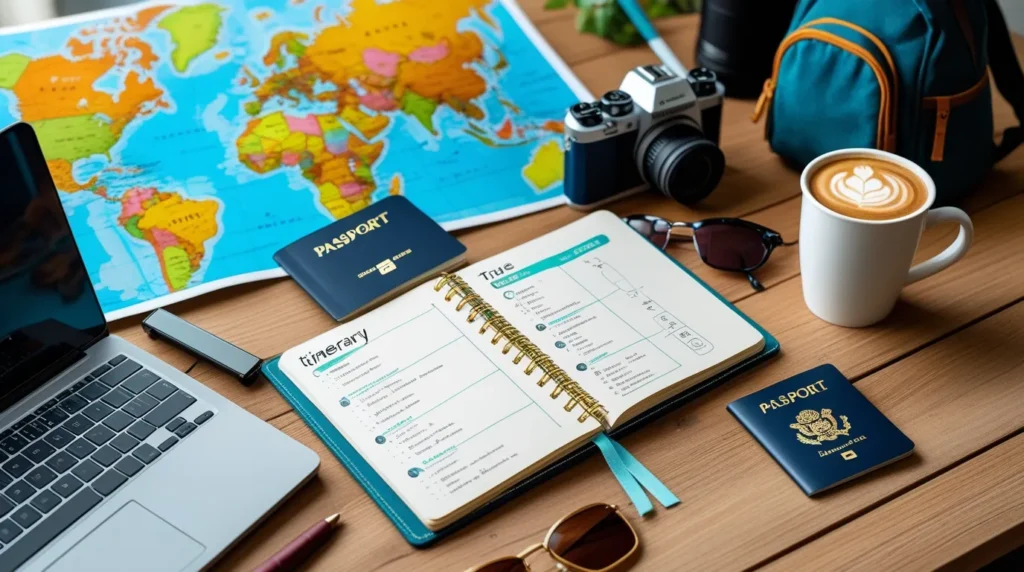Plan a Stress-Free Itinerary
Travel is meant to be enjoyable, but poorly planned trips can quickly turn into stressful experiences. A well-structured itinerary ensures you see the sights you want, stay on schedule, and still have room for relaxation.
Planning a stress-free itinerary doesn’t mean packing every minute with activities — it’s about balance, preparation, and flexibility. With the right approach, you can maximize your travel experience and minimize stress.
Here’s a step-by-step guide to help you create a smooth, enjoyable travel itinerary.
1. Start with Research
Before creating your schedule:
- Understand your destination: Look for top attractions, local culture, weather, and transport options.
- Identify must-see spots: Prioritize activities that excite you.
- Check timings and closures: Museums, parks, and tours may have limited hours.
💡 Pro Tip: Reading travel blogs or watching vlogs can give realistic insights into each location.
2. Allocate Realistic Time for Each Activity
Avoid over-scheduling your day:
- Estimate how long each activity will take, including travel time.
- Factor in meals, rest breaks, and unexpected delays.
- Plan for only 2–3 major activities per day to prevent fatigue.
3. Prioritize Flexibility
A stress-free itinerary leaves room for spontaneity:
- Keep free time for exploring unplanned attractions.
- Allow buffer hours for transportation delays or longer-than-expected visits.
- Don’t overcommit — sometimes a leisurely café or stroll becomes the highlight of your trip.
4. Group Activities Logically
Plan your days efficiently by location:
- Group nearby attractions together to minimize travel time.
- Consider the best time to visit each spot (sunrise, sunset, or crowd-free hours).
- Alternate busy and relaxed days to maintain energy.
5. Use Tools and Apps
Travel planning apps simplify the process:
- Use Google Maps for route planning.
- TripIt, Roadtrippers, or Sygic Travel help organize schedules.
- Digital itineraries prevent the stress of lost printouts.
💡 Tip: Keep a backup offline version in case of poor connectivity.
6. Book Essentials in Advance
Secure key bookings to reduce on-the-spot stress:
- Accommodations, transportation, and popular attractions.
- Some cities require advance tickets for museums or tours.
- Check cancellation policies for flexibility.
7. Pack Smart and Prepare Documents
Being prepared saves last-minute chaos:
- Pack according to weather and planned activities.
- Keep travel documents, tickets, and IDs organized.
- Use packing cubes or compartments to keep luggage manageable.
8. Include Rest and Leisure Time
Travel is as much about relaxation as sightseeing:
- Schedule downtime in cafes, parks, or scenic spots.
- Avoid cramming every moment — your mind and body need breaks.
- Even 30 minutes of rest can make your day more enjoyable.
9. Keep a Travel Journal or Notes
Document your plans and experiences:
- Track reservations, addresses, and opening hours.
- Jot down memories, tips, and observations for future trips.
- Helps you reflect on what worked and what can be improved next time.
Final Thoughts
A stress-free itinerary combines planning, flexibility, and balance. By researching your destination, prioritizing key activities, leaving room for spontaneity, and taking care of logistics, you can enjoy every moment of your trip.
Remember, the best trips aren’t just about seeing everything — they’re about making memories while staying relaxed and present. Start planning with purpose, and let your adventure be both exciting and worry-free.

